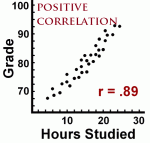I discovered a study about the relative rarity of cancer in ‘ancient’ societies. It was focused on physical evidence from Egypt (mummies and bones) and a review of ‘medical’ text from Egypt, Greece and Rome. I did a review of the article and was going to present it on our Oct 19th show. My take at the time was that it was a measured and well done study. It was forthright in its methodology, made reference to limitations in its assumptions, was limited in its claims and provided a plausible mechanism to explain their results.![]()
As often happened the SGU (Skeptics Guide to the Universe) will a few days later duplicate some of our segments, as they did on this one. I was STUNNED at how wrong they got it. It sounded to me like they only read the media spin (which often spins in the wrong direction) and did not actual read the study. As a good skeptic, I did not want to assume something with checking out the ‘source’ material…as I did with the original study. So I checked out Steve Novella’s blog Neurologica.
![]() Neurologica did not focus on the study (something I do have issues with) but on the extensive interview one of the researched gave on the University of Manchester website. I then checked out the interview and was stunned. It seemed one of the authors of the study did not read their own study. So, it turns out the SGU did get it wrong…kinda…and at least one of the authors of the study(Dr. David) got it very wrong – I still think the study is good. Why?
Neurologica did not focus on the study (something I do have issues with) but on the extensive interview one of the researched gave on the University of Manchester website. I then checked out the interview and was stunned. It seemed one of the authors of the study did not read their own study. So, it turns out the SGU did get it wrong…kinda…and at least one of the authors of the study(Dr. David) got it very wrong – I still think the study is good. Why?
Straw Man – the SGU got it totally wrong when they stated in the podcast that the study stated that there was NO cancer in the ancient world. This, sadly, coloured the rest of their conversation and led them to disprove something not actually claimed by the study (although to add confusion something claimed by Dr. David). Actually the study pointed out a number of cases where there was physical evidence for cancer and more notably used ancient ‘medical’ text to show that cancer was known and treated (poorly) although rarely cured. The text stated that ‘medicine’ was ineffective and that the most common treatment was surgery or cauterizing the tumour.
The issue with longevity – First, Steve misread (shall I be generous?) and stated the study only involved mummies between 25-50yrs that is wrong. What the study said was the life expectancy was 40-50 for the wealthy and 25-30 for the poor. Actual age of the specimens was rarely mentioned. The SGU and the study noted that there was an issue comparing cancer rates of a population that had a life expectancy of 25-50yr to one that has an expectancy of 70-80yrs. The study addressed this by pointing out that a number of conditions have been diagnosed such atherosclerosis, Paget’s disease of bone and arthritis. Further, comparisons of ‘child’ or ‘early onset’ cancers could be reasonable compared. The SGU rightfully points out that the biggest childhood cancers, leukemia, leaves little to no ‘archaeological evidence’. However Osteosarcoma, one of the top ten childhood cancers is a bone cancer leaving notable evidence. Steve inaccurate states that “there does not appear to be any child mummies in their study”. However the study does make explicit reference to Chilean child mummies. The SGU also seems to imply that NO cancers occur between childhoods and ‘old age’, this is not true.
Causes of Cancer – as is stated earlier, The SGU is not totally off based with their attack. Professor Rosalie David, one of the study’s authors, in an interview on the University of Manchester website, shows a complete lack of understanding of her own study or (as i think the SGU suspects) plans to use the study to make tangential claims. She did state that “There is nothing in the natural environment that can cause cancer” something explicitly contradicted in her own study which stated that “Carcinogenic Environmental factors have been linked to up to 75% of human cancers” meaning that 25% are not linked and that’s assuming all carcinogenic environmental factors are ‘man-made’ which is not true either. For example, Bangladesh is plagues with high concentrations of arsenic in their water due to natural deposits. She weakens here own conclusions by stating that with regards to the ancient cancers “we are not sure what caused them”. The study also points out that “Various malignancies have been reported in non-human primates”; I am unsure how she connects these to ‘modern industrialization’.
One the SGU side, they seem to deny that ‘modern life’, with the dramatic increase in ‘man-induced’ environmental carcinogenic, could possible result in more cancers now than then. We know that chemical pollutions, nuclear bomb testing (in its day) and other factors have caused increase risk of cancer that just did not exist even 300 yrs. ago. Its equivalent to saying (and I am being perhaps too strong here) that electrocutions are about the same now as in ancient times. I think I understand why they are reacting so strongly to this, there are a number of people who claim everything in the ancient days was better or that this proved WiFi causes cancer – that’s nuts. However, I think they have overreacted (at least to the underlying article).
Lack of evidence – Steve says it is “an inherently weak form of evidence on which to base conclusions”. That is valid sometimes but not always. For example, if we had the hypothesis cancer was non-temporally correlated (ie cancer rates have changed little over history) then one would expect a similar number of cases on ancient times as now…that the fact there are dramatically fewer then than now is evidence for a change in prevalence. In fact I would have to ask Steve what evidence would he accept to show that something was worse now than then or visa-versa? I think, in this case, he got this completely wrong. I think, the worst criticism of the study I could find was the lack of numbers. There are a lot of mummies in the world, but it is not directly stated how many are represented in this meta-analysis nor is there any statistical correlation. Bone cancers, for example, are relatively common in children but that still only amounts to 5-10 per million per year. So, if 1000 mummies, we would expect < 1 case…their claim is weakest on the numbers. I would also like to have seen a graduation of evidence. Jumping from ancient Egypt to modern society seems large. If their hypothesis is true, one would expect a gradual increase in cancer rates over time with an explosion in modern times (statistically speaking).
not always. For example, if we had the hypothesis cancer was non-temporally correlated (ie cancer rates have changed little over history) then one would expect a similar number of cases on ancient times as now…that the fact there are dramatically fewer then than now is evidence for a change in prevalence. In fact I would have to ask Steve what evidence would he accept to show that something was worse now than then or visa-versa? I think, in this case, he got this completely wrong. I think, the worst criticism of the study I could find was the lack of numbers. There are a lot of mummies in the world, but it is not directly stated how many are represented in this meta-analysis nor is there any statistical correlation. Bone cancers, for example, are relatively common in children but that still only amounts to 5-10 per million per year. So, if 1000 mummies, we would expect < 1 case…their claim is weakest on the numbers. I would also like to have seen a graduation of evidence. Jumping from ancient Egypt to modern society seems large. If their hypothesis is true, one would expect a gradual increase in cancer rates over time with an explosion in modern times (statistically speaking).
So, I am left a little flat. I think the study was good. However, I think at least one of the authors comments made overstated some claims of the study, contradicted their own study and made comments that were demonstrably false. I think, if the SGU (and more to the point Steve’s entry on Neurologica) was based on the study then they also did a hash of it. However, if you ignore the study and focus on what the authors stated about it and the media spin, their criticisms are more accurate. Irrespective, I liked the study and hated the inaccurate spin that followed it both by the author, the media and the SGU. Better luck next time.
Original article:
http://www.nature.com/nrc/journal/v10/n10/full/nrc2914.html
Interview with Dr. David:
http://www.manchester.ac.uk/aboutus/news/display/?id=6243
Neurologica Blog: